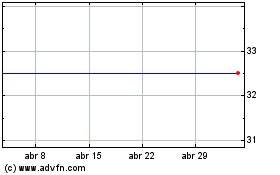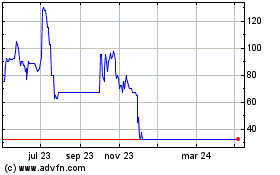TIDMTNT
Tintra PLC
07 March 2022
7 March 2022
TINTRA PLC
("Tintra", the "Group" or the "Company")
Are increased levels of regulatory compliance the only way to
ensure AML success?
Using RegTech may be the answer.
Richard Shearer, Group CEO, recently authored the following
article on "Increased levels of regulatory compliance aren't the
only way to ensure AML success", which will be disseminated through
a number of media outlets:
During 2021, there was a significant decrease in fines to
financial institutions for failing to comply with anti-money
laundering ("AML") regulations - but we should hesitate before
celebrating this news. This may be a difficult temptation to avoid,
since - from a purely statistical standpoint - the numbers seem
noteworthy.
Regtech firm, Fenargo, has reported that, globally, financial
institutions racked up $5.37 billion in fines in 2021, as opposed
to the $10.6 billion incurred during 2020 - and compliance breaches
only came to 176 last year, a substantial reduction on the 760 that
made up 2020's total.
On the face of it, it's easy to see why publications like The
Banker have celebrated this development as positive news in the AML
world - but in my view it is somewhat of a mistake to assume that
higher levels of compliance automatically equate to less financial
crime, let alone more inclusive access to international
transactions.
In fact, it may well be that the pandemic played a role in this
downward trend - after all, investigators faced transitional
periods as much as anyone else, and it wouldn't be surprising to
learn that fewer in-person or on-site investigations occurred in
2021.
For the sake of argument however let's imagine for a moment that
these figures do indeed reflect a financial world which is tracking
more firmly within regulatory guidelines and behaving in a more
risk-averse a manner.
Should we really see this as AML success?
Rethinking is Necessary
Perhaps one of the more obvious reasons to resist
self-congratulation by regulators due to increased compliance is
that AML procedures don't necessarily work in the manner that they
are intended.
A 2020 report from EY makes this point in admirably succinct
terms. "Despite the evolution" of KYC/AML processes, the firm
notes, "their effectiveness and efficiency often remains an
issue."
If AML procedures are in and of themselves - to some extent
-ineffective, increased adherence to these rules doesn't seem to be
the goal we should be aiming.
EY's report points to a number of typical issues that include
issues such as inaccurate risk classifications, false positive
alerts, and expensive human reviews, leading - as a result - to a
system in which under 10 per cent of Suspicious Activity Reports
are of any immediate use to the authorities. This is exacerbated
when we add in an emerging market variable.
Not only do these routine procedural issues often fail to make
inroads into the fight against financial crime, but they result -
as one might expect - in costing institutions in the process.
EY describes current AML compliance in terms of "high levels of
manual, repetitive, and data-heavy tasks" - all of which cost UK
institutions around GBP28.7 billion annually, according to a 2021
report from LexisNexis and Oxford Economics.
Thinking about AML in terms of cost, effectiveness, and
efficiency throws reports of increased compliance into a new light,
as institutions avoid anti-compliance penalties by throwing money
and human resources at procedures for a problem that is best solved
by technology.
We clearly need a new way to measure success in the world of
AML.
Fewer false positives, more financial inclusion
Solving this problem, properly and not just with rules that
sound good and adherence to them is a goal of my business and a
number of others. We need to truly be able to assess risk in a
fast, constant and effective manner.
We need to think about different ways to define - and even
celebrate - success in AML terms.
Rather than pointing to an [implied] increase in compliance with
current guidelines, we should instead stress the value of adopting
new and more sophisticated technologies.
Such was the conclusion of Steve Elliott, one of the authors of
the Oxford Economics/LexisNexis report, who notes that "increasing
AML regulations, rather than an evolving criminal threat is the
primary driver for increased compliance costs in the UK" - and that
we should be driven by "big data and technology instead of rules
and manual processing."
EY make a similar point, suggesting that "the time is now to
explore the capabilities of artificial intelligence" in order to
"scale and adapt to the modern threat of money laundering." I would
argue that it's not just the time to explore AI capabilities but to
build these engines that will fundamentally alter the financial
landscape.
Of course, by using AI to automate processes and assess risk, we
won't just be fighting financial crime - we'll also be performing a
service for the victims of the false positives which currently make
up 90 per cent of suspicious activity alerts. 90% of hits being
proven to be good folks mis-rated by a compliance team suggests
that there are a lot of offenders being missed.
This is particularly relevant for emerging market
multinationals, who doubtless make up a huge swathe of these false
positives, and for no other reason than operating in a country
deemed 'risky' by prejudicial, I would argue biased, AML
practices.
Celebrating opportunity
With the right training against bias, technology - like the
advanced AI solutions my team and I are currently focused on - can
prevent such victims of false alerts, including the many who
operate in emerging markets, from having to leap through the
hurdles of current compliance processes.
In other words, AML success should be measured via the adoption
of new technologies and through reductions in false positive alerts
and not by the fines exacted upon institutions who are implementing
somewhat flawed systems in the first place. By extension, it is my
strong belief that this AML success will be felt in the many
financial opportunities currently delayed or denied to people,
organisations and countries in developing parts of the world.
Richard Shearer, CEO of Tintra PLC
https://tintra.com/
ENDS
For further information, contact:
Tintra PLC
(Communications Head)
Hannah Haffield
h.haffield@tintra.com
Website www.tintra.com 020 3795 0421
Allenby Capital Limited
(Nomad, Financial Adviser & Broker)
John Depasquale / Nick Harriss / Vivek
Bhardwaj 020 3328 5656
This information is provided by Reach, the non-regulatory press
release distribution service of RNS, part of the London Stock
Exchange. Terms and conditions relating to the use and distribution
of this information may apply. For further information, please
contact rns@lseg.com or visit www.rns.com.
Reach is a non-regulatory news service. By using this service an
issuer is confirming that the information contained within this
announcement is of a non-regulatory nature. Reach announcements are
identified with an orange label and the word "Reach" in the source
column of the News Explorer pages of London Stock Exchange's
website so that they are distinguished from the RNS UK regulatory
service. Other vendors subscribing for Reach press releases may use
a different method to distinguish Reach announcements from UK
regulatory news.
RNS may use your IP address to confirm compliance with the terms
and conditions, to analyse how you engage with the information
contained in this communication, and to share such analysis on an
anonymised basis with others as part of our commercial services.
For further information about how RNS and the London Stock Exchange
use the personal data you provide us, please see our Privacy
Policy.
END
NRASSEFFWEESEID
(END) Dow Jones Newswires
March 07, 2022 07:00 ET (12:00 GMT)
Tintra (LSE:TNT)
Gráfica de Acción Histórica
De Mar 2024 a Abr 2024

Tintra (LSE:TNT)
Gráfica de Acción Histórica
De Abr 2023 a Abr 2024
